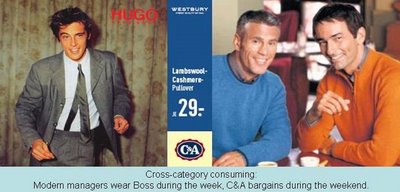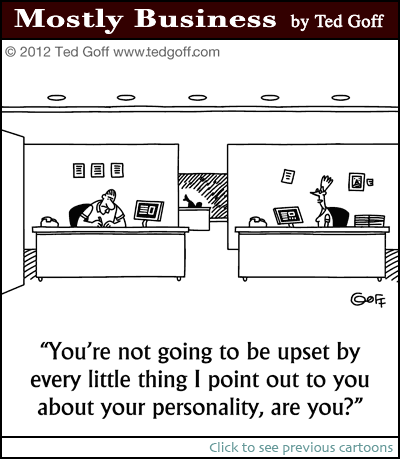 Standard marketing tools were the result of processes and practices developed in traditional consumer goods companies in the 50’s and 60’s. Their marketing departments invested in research looking for demographic, sociographic even psychographic profiles of their customers followed by bombarding the potential clients through traditional advertising media. The involvement of the traditional marketing department stopped once the product was sold. This is no longer valid. Consumers are not looking for “products” anymore, they are looking for a “customer experience”. They don’t hook their soul anymore to one “product category”, they have become extremely “cross-category”. For example: On Sunday the customer will go to his exclusive traditional bakery for bread and pastry. On Wednesday he goes to Aldi for sandwiches and hotdogs for a birthday party of the children. Or business people in Hugo Boss during the week are wearing C&A bargains in the weekend.
Standard marketing tools were the result of processes and practices developed in traditional consumer goods companies in the 50’s and 60’s. Their marketing departments invested in research looking for demographic, sociographic even psychographic profiles of their customers followed by bombarding the potential clients through traditional advertising media. The involvement of the traditional marketing department stopped once the product was sold. This is no longer valid. Consumers are not looking for “products” anymore, they are looking for a “customer experience”. They don’t hook their soul anymore to one “product category”, they have become extremely “cross-category”. For example: On Sunday the customer will go to his exclusive traditional bakery for bread and pastry. On Wednesday he goes to Aldi for sandwiches and hotdogs for a birthday party of the children. Or business people in Hugo Boss during the week are wearing C&A bargains in the weekend.Consumers have gone the other way than their traditional suppliers. When Bain & Company surveyed 362 firms it found that 80 % believed they delivered a “superior consumer experience”. However when the customers were asked to rate the same suppliers only 8% of the suppliers seemed to deliver a superior experience. To close this gap suppliers should concentrate on developing the following three marketing D’s.
- Design an entire customer experience instead of just developing a product and pushing it into a market.
- Deliver the propositions of a customer experience at the lowest cost possible involving a cross departmental action plan.
- Develop a relationship with the client so you can follow up on the ever increasing shifts in customer attitude, to be able to deliver again, again and again.





















